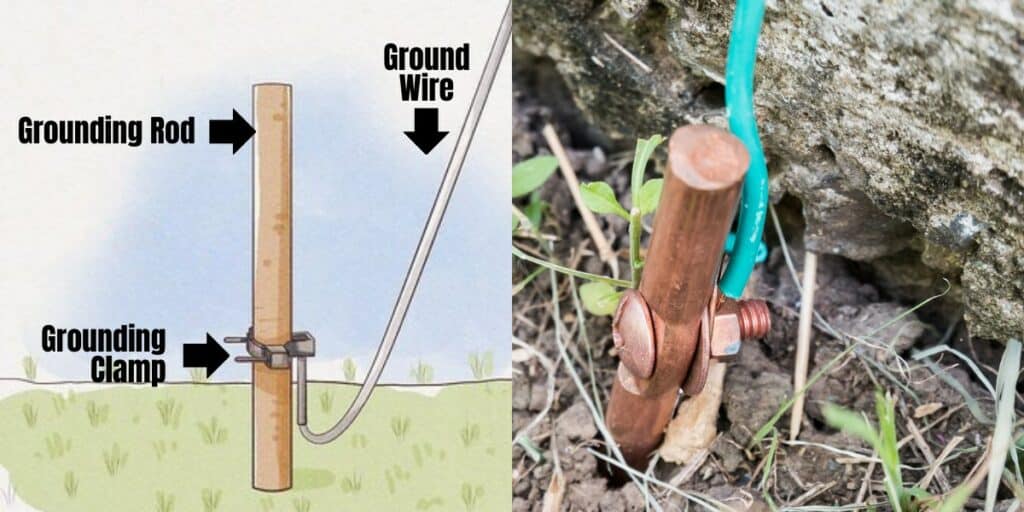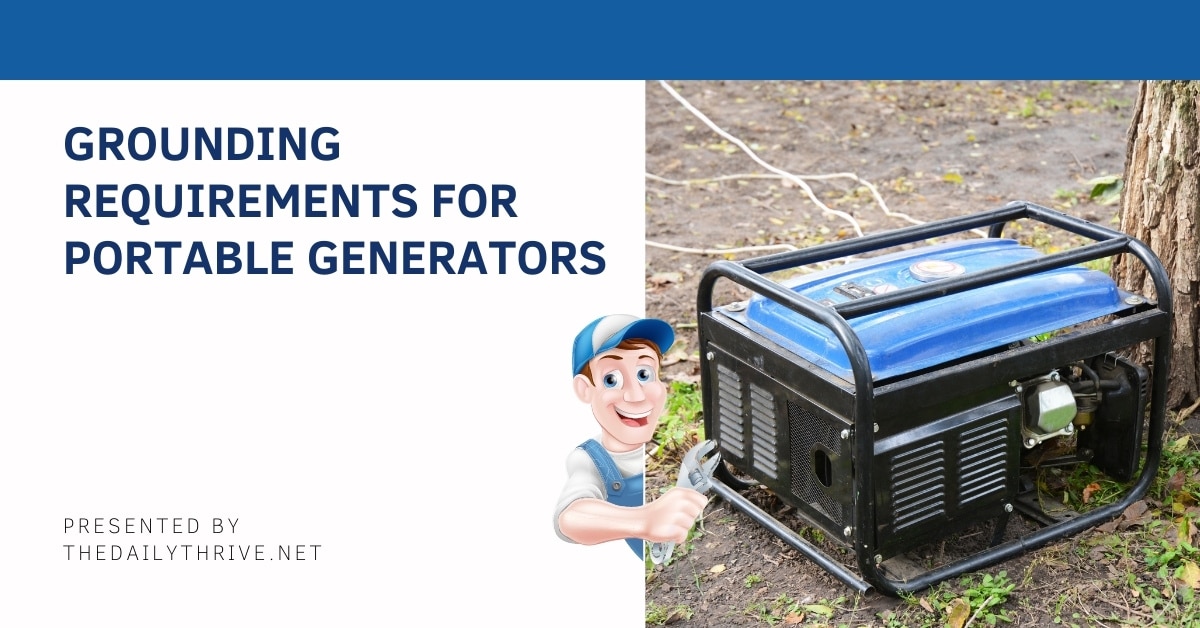Portable generators are invaluable for generating electricity in temporary or remote locations, particularly during disaster recovery operations. A crucial aspect of their safe operation lies in proper grounding. Grounding requirements, as dictated by the National Electrical Code (NEC), are designed to prevent electric shocks and ensure user safety. This article will explore the grounding necessities for portable generators and provide essential guidelines for their safe use.
The NEC stipulates that the primary goal of grounding is to maintain the generator frame at zero voltage. This is vital because, during operation, current may pass through a user’s body in fault conditions like exposed wires, causing electric shock.
Grounding Requirements for Earth Pin and Metal Water Pipe
There are specific scenarios where the NEC mandates grounding a portable generator to a metal water pipe or ground rod:
- Non-Separately Derived Systems: Grounding is required if the generator is not part of a separately derived system.
- Neutral Conductor Presence: Generators with a neutral conductor also require grounding.
- Auxiliary Power Supply: Generators providing auxiliary power through means other than plug-and-cord connections need grounding.
An earth rod driven deeply into the soil is necessary for generators placed directly on the ground. Those hard-wired to a building’s electrical system must connect to either a ground rod or a metal water pipe.
Exceptions to Grounding Requirements
In certain situations, grounding to a metal water pipe or ground rod is not needed:
- Vehicle-Mounted Generators: If the generator is mounted on a vehicle and secured to its frame, the vehicle itself acts as a grounding device.
- Bolted to Vehicle Frame: Generators bolted to a vehicle frame create an electrically conductive path, ensuring electrical continuity without additional grounding.
- Auxiliary Power and Ground Pin Outlet: Additional grounding is unnecessary if the portable generator has auxiliary power output with a ground pin outlet.
- Generator-Mounted Receptacles: Generators with receptacles mounted on them do not require grounding to an earth pin or metal water pipe.
Grounding Requirements for Metal Rods and Water Pipes
Choosing the right grounding method – whether a metal rod or water pipe – is crucial for the safety of electrical systems. The method should be selected based on soil conditions, accessibility, and the specific requirements of the electrical system in question.
Grounding with Metal Rods

Using metal rods for grounding is a common and effective practice. The specifications for these rods are quite specific to ensure optimal conductivity and safety:
- Material Composition: The rod should be copper or highly conductive. Copper is preferred due to its excellent conductivity and resistance to corrosion.
- Length Requirements: The rod must be at least eight feet long. This length ensures it can reach a depth in the ground where the soil remains moist, enhancing its conductive properties.
- Diameter Considerations: A diameter of 0.5 inches is standard for grounding rods. This thickness balances the ease of driving the rod into the ground with sufficient physical and electrical robustness.
- Installation Depth: The entire length of the rod should be driven into the ground. This depth ensures that the rod makes adequate contact with the earth, providing a reliable path for electrical currents to be safely dissipated.
Grounding with Metal Water Pipes
Metal water pipes can also be used for grounding purposes under certain conditions:
- Material and Contact: The pipes should be made of conductive metals like copper or galvanized steel. They must be in direct contact with the earth for a considerable distance, which helps in dispersing the electrical current over a wide area.
- Continuous Contact with Earth: The section of the pipe used for grounding should be buried underground and maintain continuous contact with the earth. This ensures a stable and reliable grounding path.
- Avoiding Insulated Sections: Care must be taken to ensure that the pipe does not have non-conductive sections, such as plastic, that could interrupt the grounding path.
- Accessibility and Safety: The grounding connection to the pipe should be accessible for inspection and maintenance and placed in a location where it is not prone to physical damage.
Safety Concerns and Best Practices with Portable Generators
Ensuring the safe operation of portable generators involves more than just proper grounding. Here are key safety measures:
- Adherence to Manufacturer’s Guidelines: Follow the manufacturer’s instructions for usage and safety.
- Electrical System Connection: Never directly connect a generator to a building’s electrical system without an appropriate open-transition transfer switch.
- Appropriate Use of Cords: Plug tools and appliances directly into the generator using the provided cords and utilize heavy-duty extension cords with grounding conductors.
- GFCI Compliance: Use ground-fault circuit interrupters as recommended by the manufacturer.
- Regular Equipment Inspections: Check equipment before use, remove damaged items from service, and mark them as unsafe.
Conduct yearly inspections to ensure the connection between the generator frame and equipment grounding terminals remains robust. This can be verified by a professional electrician using appropriate tools to measure ohmic resistance, which should be close to zero.
Proper grounding and adherence to safety protocols are fundamental for safely operating portable generators. Understanding and applying these NEC guidelines can significantly reduce the risk of electric shocks and ensure efficient generator performance. Consult a skilled electrician to ensure your portable generator is set up correctly and safely.

